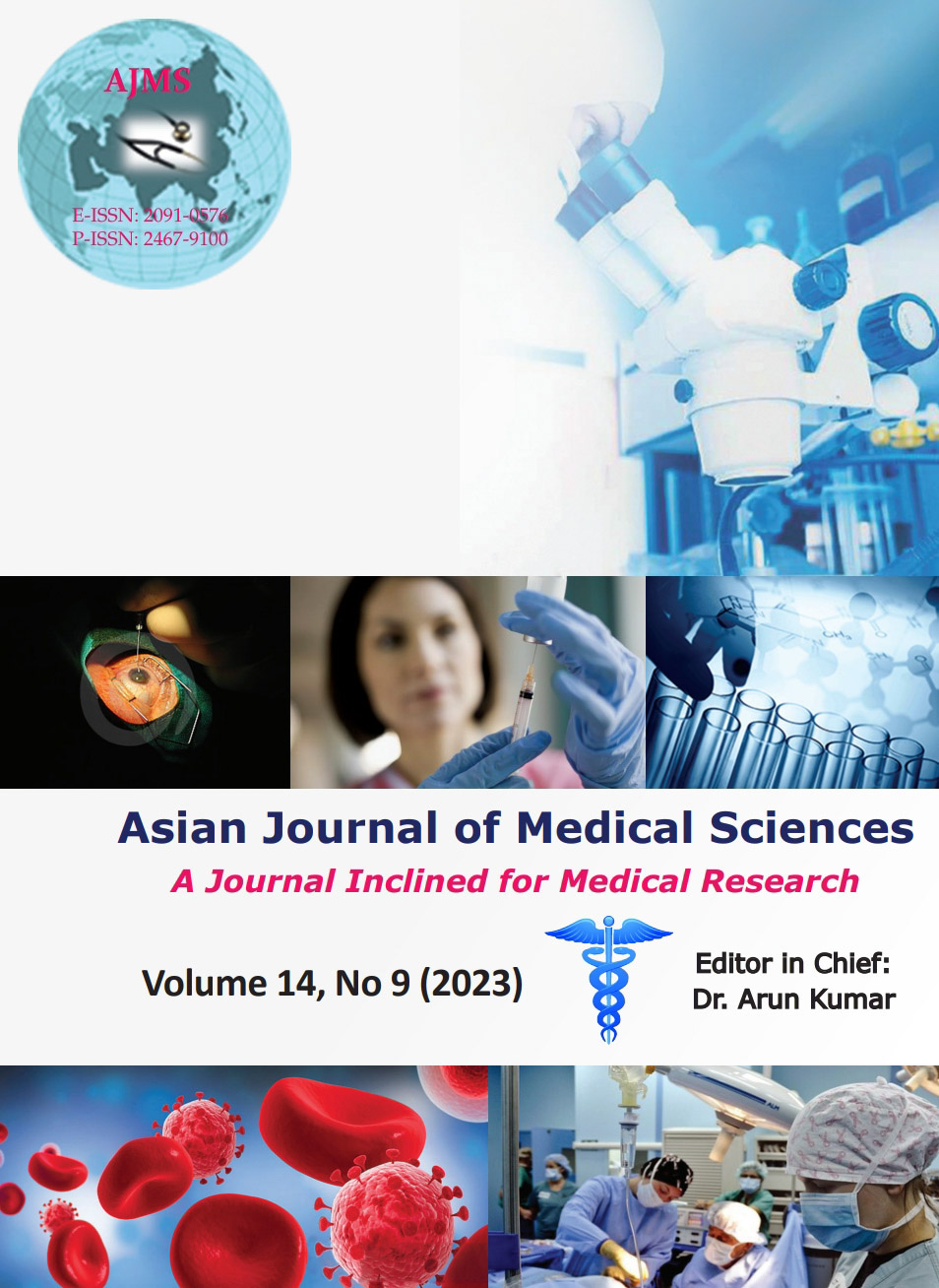Clinical profile and outcome of patients of common krait bite with features of neurotoxic envenomation, treated with intravenous calcium gluconate infusion in conjunction with AVS, a tertiary care center-based study
Keywords:
Common krait; Neuroparalysis; Calcium gluconate; Neurotoxic snake envenomation; Anti-venom serumAbstract
Background: Snake bite is one of the most neglected diseases in South East Asian region. Common Krait (CK) (Bungarus caeruleus) is the deadliest snake found in the dry zones of India. With the polyvalent anti-venom serum (AVS) remaining the cornerstone of treatment of neurotoxic snake envenomation, there is no universally accepted treatment for CK envenomation-associated neuroparalysis, except supportive measures.
Aims and Objectives: Our study was conducted to describe the epidemiology, define clinical features, study outcome, and apparent efficacy of calcium gluconate in preventing or reversing neuromuscular paralysis with respiratory failure in CK bite patients.
Materials and Methods: This study is a prospective observational study done on 52 CK bite patients. Patients were enrolled according to inclusion and exclusion criteria and were treated with AVS and calcium gluconate infusion according to National Standard Guideline, 2016. Patients developing severe respiratory muscle paralysis were offered mechanical ventilation.
Results: Patients developed ptosis and dysphagia, pain abdomen, cyanosis, paralysis of jaw and tongue, perioral numbness, altered sensorium, dysphonia, ophthalmoplegia, and paradoxical breathing. 21.15% of patients developed respiratory failure and needed ventilator support with average critical care unit stay of 3 days and average stay on a ventilator of 2 days. 3 patients expired (case fatality rate 5.77%). The average hospital stay was 3.33 days.
Conclusion: Our study shows that early intervention in patients of CK bite with neurotoxic envenomation, with calcium gluconate infusion, leads to less mortality and morbidity compared to other relevant studies. Further large-scale studies are required for better understanding and implementation.
Downloads
Downloads
Published
How to Cite
Issue
Section
License
Copyright (c) 2023 Asian Journal of Medical Sciences

This work is licensed under a Creative Commons Attribution-NonCommercial 4.0 International License.
Authors who publish with this journal agree to the following terms:
- The journal holds copyright and publishes the work under a Creative Commons CC-BY-NC license that permits use, distribution and reprduction in any medium, provided the original work is properly cited and is not used for commercial purposes. The journal should be recognised as the original publisher of this work.
- Authors are able to enter into separate, additional contractual arrangements for the non-exclusive distribution of the journal's published version of the work (e.g., post it to an institutional repository or publish it in a book), with an acknowledgement of its initial publication in this journal.
- Authors are permitted and encouraged to post their work online (e.g., in institutional repositories or on their website) prior to and during the submission process, as it can lead to productive exchanges, as well as earlier and greater citation of published work (See The Effect of Open Access).




